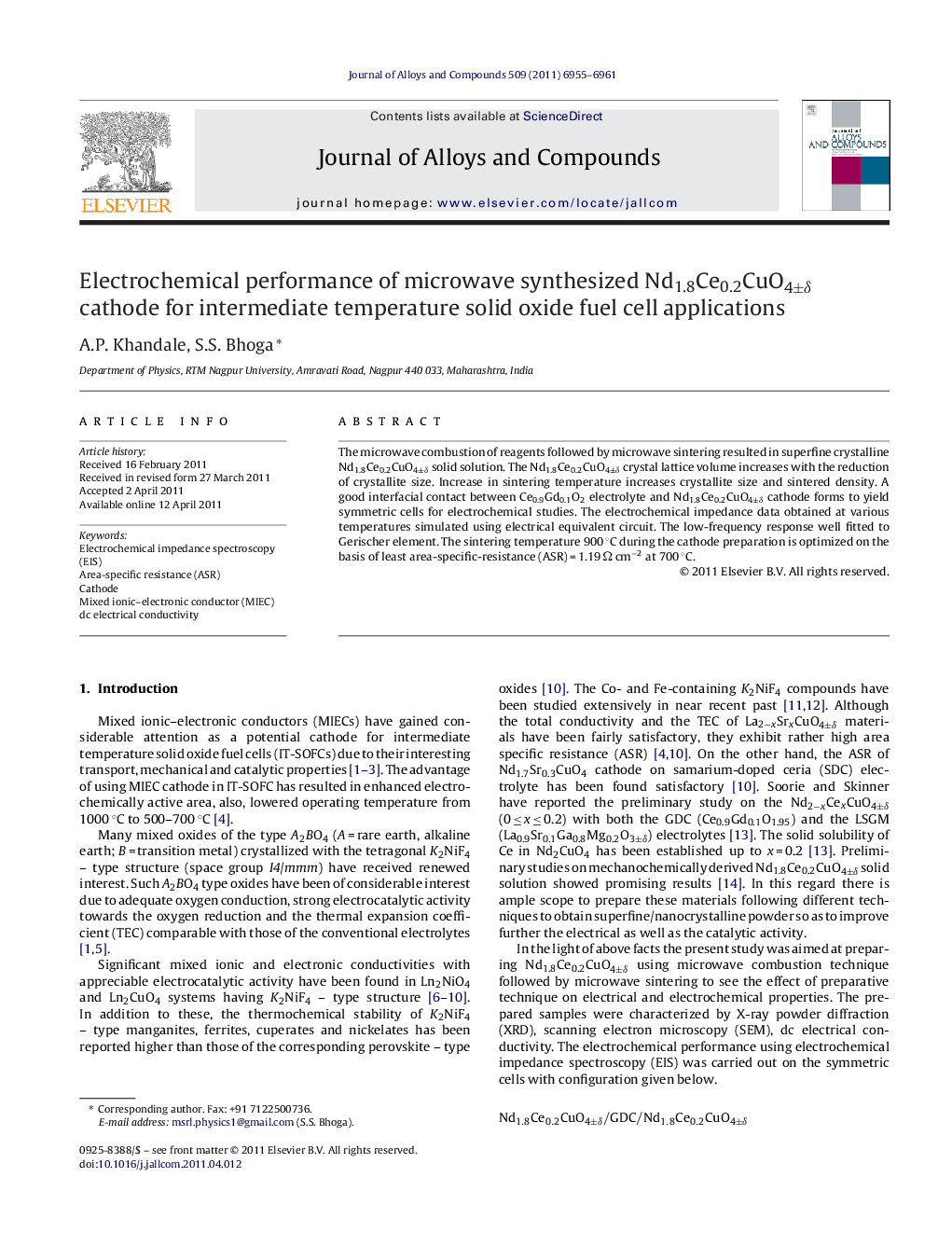| Article ID | Journal | Published Year | Pages | File Type |
|---|---|---|---|---|
| 1617254 | Journal of Alloys and Compounds | 2011 | 7 Pages |
The microwave combustion of reagents followed by microwave sintering resulted in superfine crystalline Nd1.8Ce0.2CuO4±δ solid solution. The Nd1.8Ce0.2CuO4±δ crystal lattice volume increases with the reduction of crystallite size. Increase in sintering temperature increases crystallite size and sintered density. A good interfacial contact between Ce0.9Gd0.1O2 electrolyte and Nd1.8Ce0.2CuO4±δ cathode forms to yield symmetric cells for electrochemical studies. The electrochemical impedance data obtained at various temperatures simulated using electrical equivalent circuit. The low-frequency response well fitted to Gerischer element. The sintering temperature 900 °C during the cathode preparation is optimized on the basis of least area-specific-resistance (ASR) = 1.19 Ω cm−2 at 700 °C.
► Microwave combustion followed by microwave sintering gives super-fine crystalline Nd2−xCexCuO4±δ. ► Electrical and electrochemical properties are correlated with microstructure. Microwave sintering temperature optimized to 900 °C. ► Gerischer element simulates the low frequency response in EIS. ► Superfine grains improves electrochemical properties. Nd2−xCexCuO4±δ may be a potential cathode for IT-SOFC.
